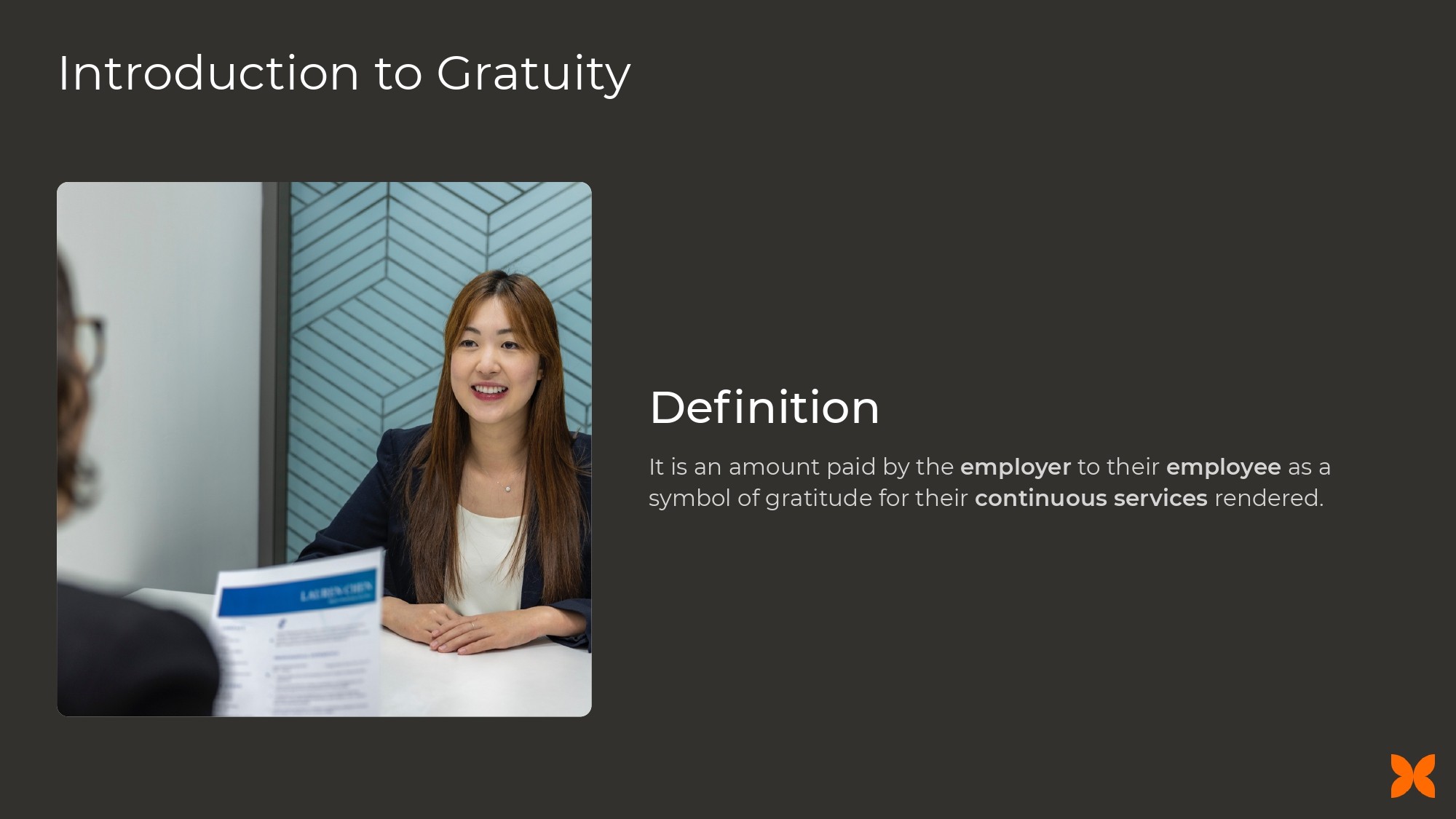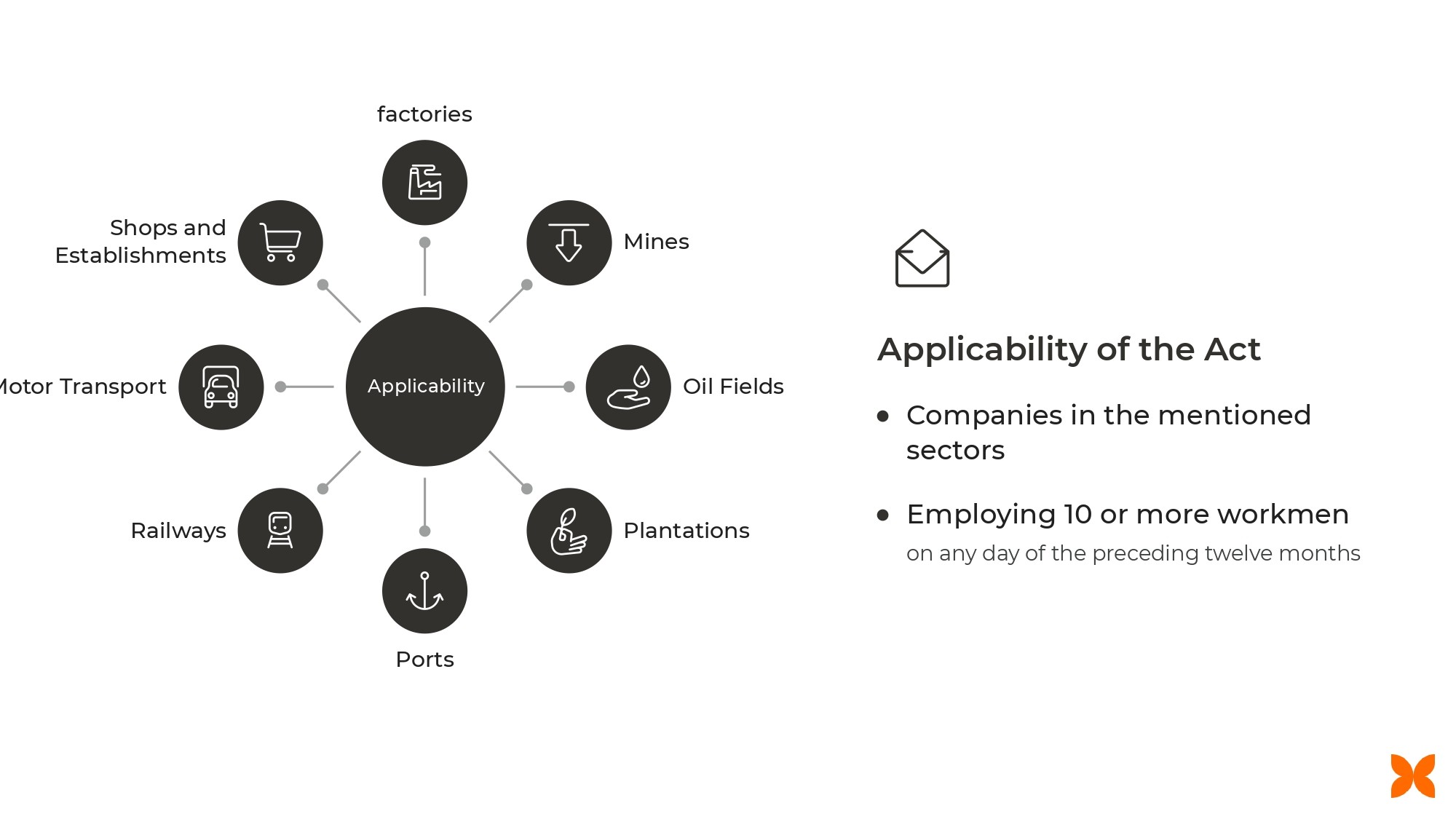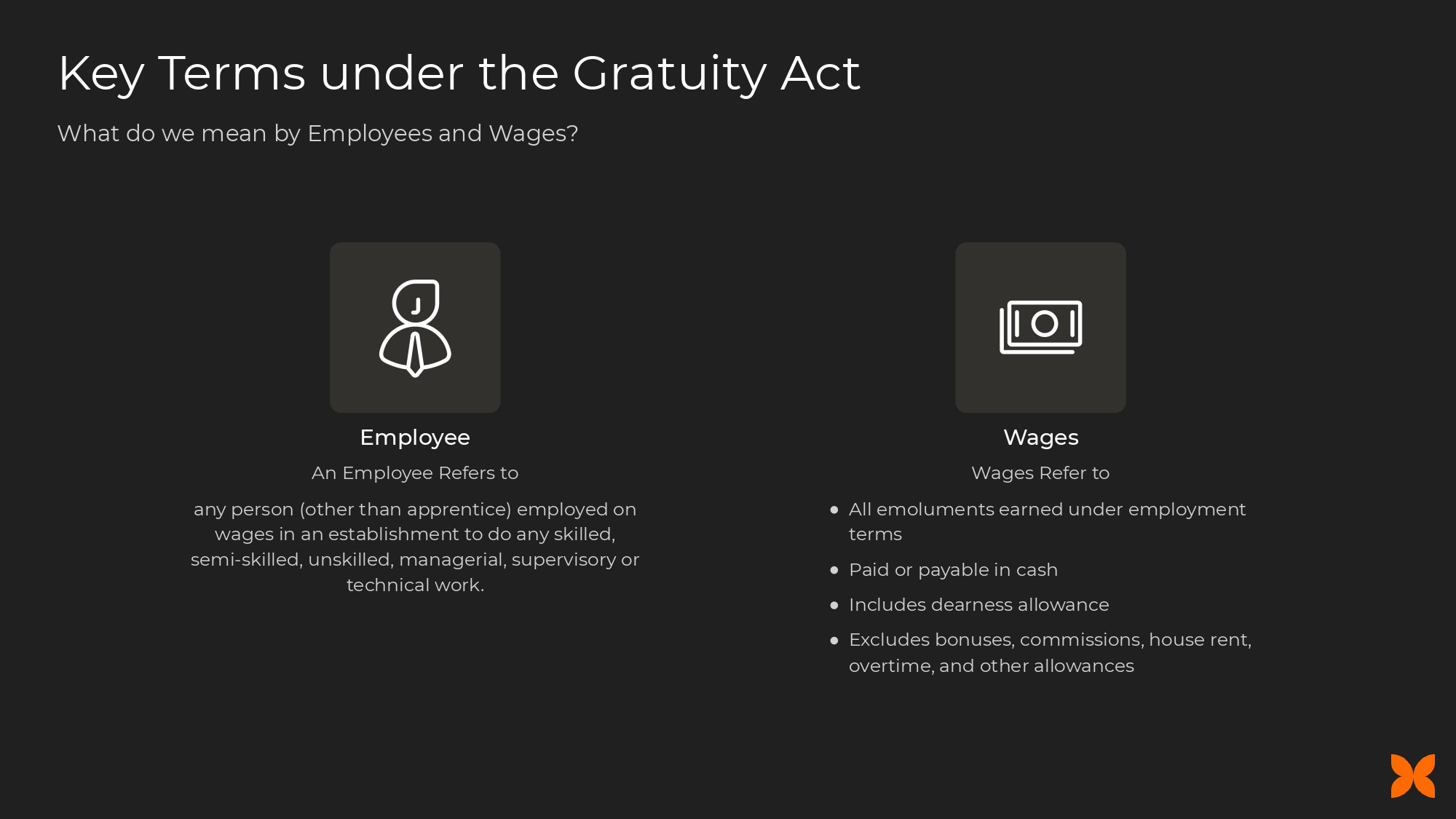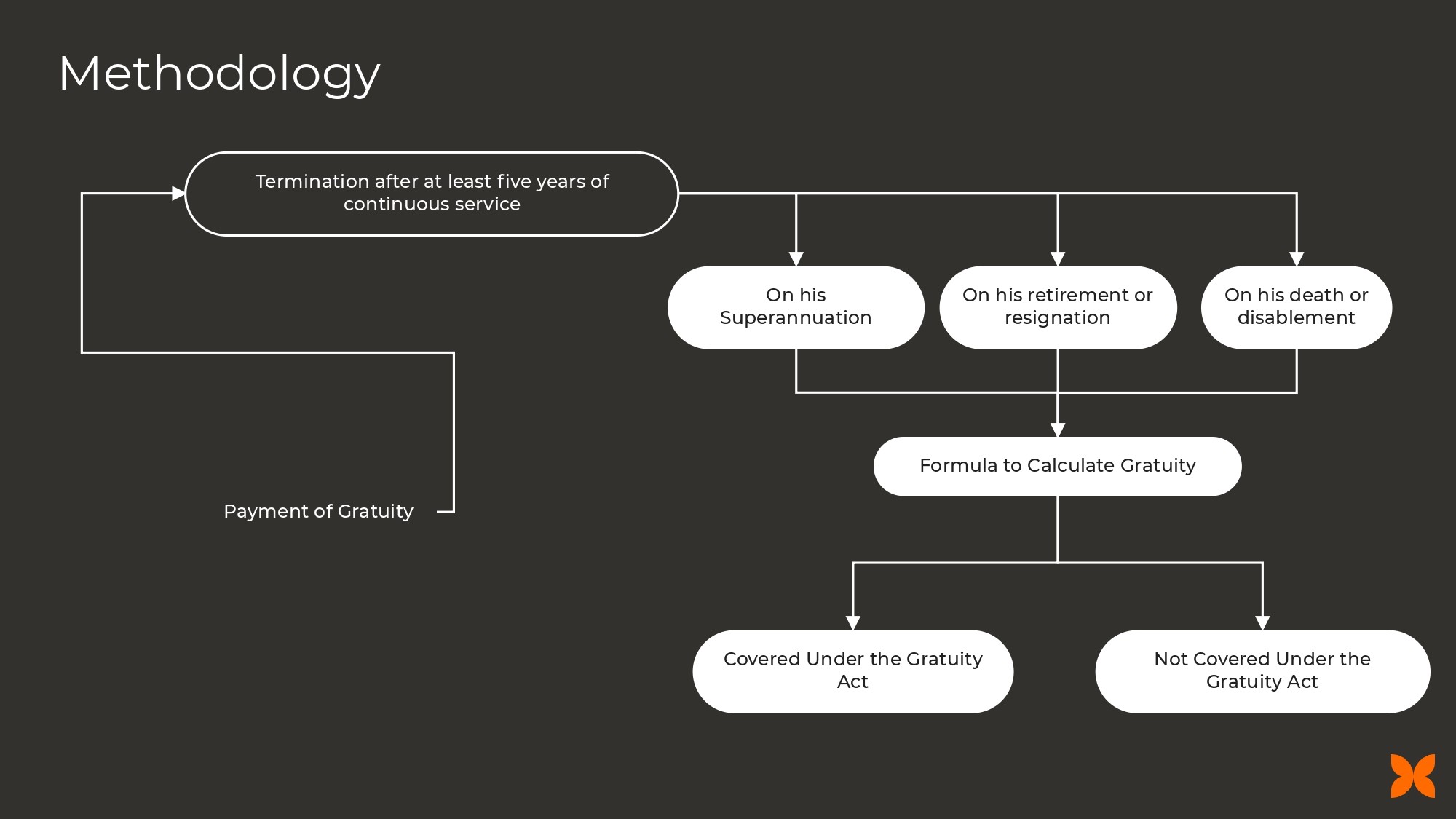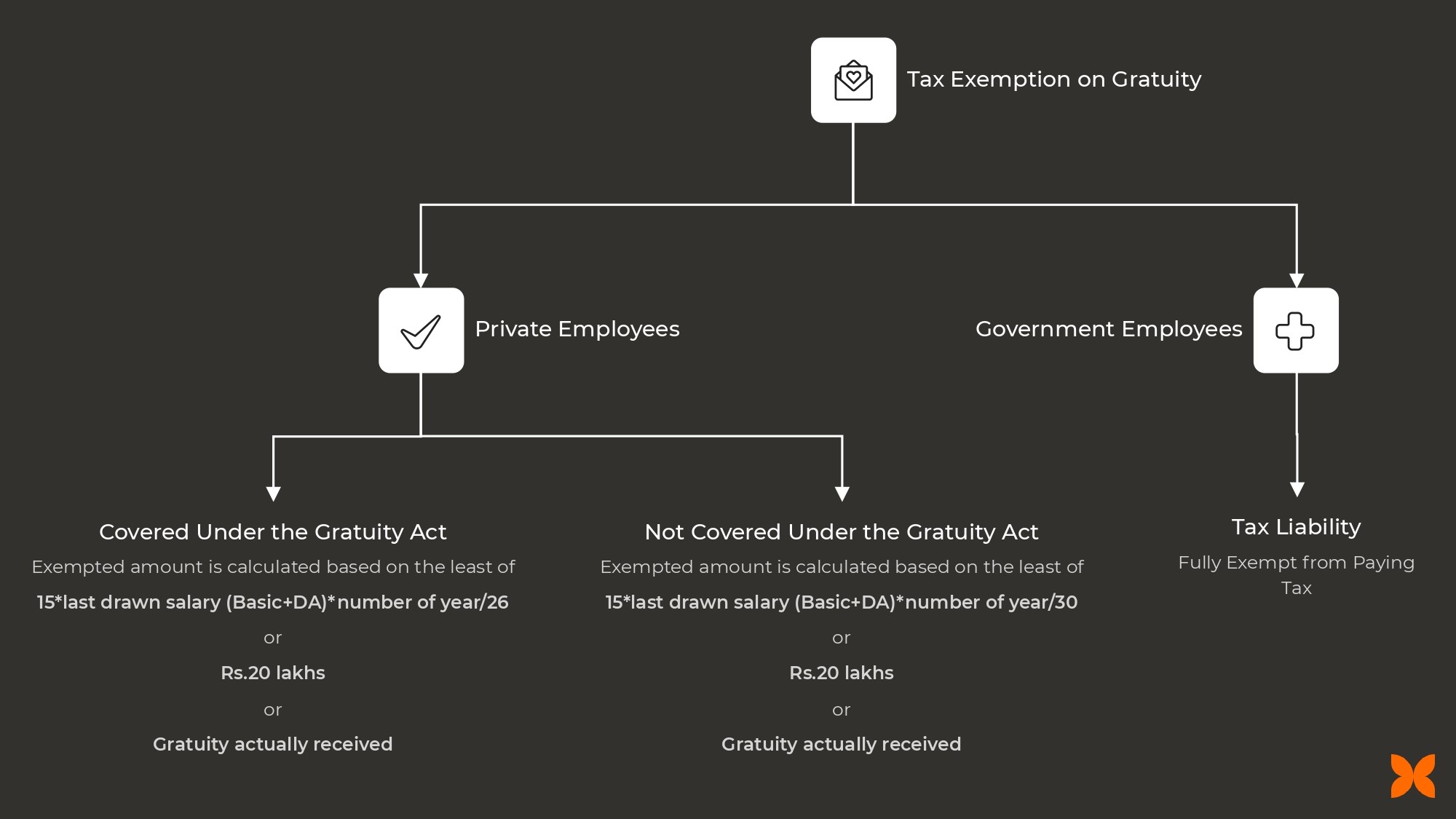The Payment of Gratuity Act, 1972
September 17 2024
The Payment of Gratuity Act, 1972, is a critical law ensuring employees receive a token of gratitude for their service. It applies to organizations with 10 or more employees, mandating gratuity payments upon retirement, resignation, or in cases of death or disablement.
For HR professionals and employers, understanding this Act is crucial for payroll management and ensuring compliance. Proper implementation not only aligns companies with legal requirements but also enhances employee satisfaction by securing financial benefits after years of service.
Gratuity is a financial reward paid by an employer to an employee for their long-term service, symbolizing gratitude for their loyalty and contributions. The Act was introduced to standardize this practice and protect employees from inconsistent or unfair payments. Here's why gratuity matters:
Before the Act, gratuity was ad hoc and often arbitrary. By codifying these rules, the Act brings transparency and uniformity, ensuring employees are rewarded fairly and consistently after dedicated service.
Why these terms matter: They create clear guidelines on who is eligible for gratuity and how payments are determined, ensuring that businesses stay compliant and employees receive their rightful benefits.
This is the framework that makes the Payment of Gratuity Act practical, fair, and enforceable.
Gratuity becomes payable when an employee completes five years of continuous service, except in cases of death or permanent disablement, where the service requirement is waived. The Act outlines specific situations where gratuity must be paid:
Retirement - Upon reaching the age of superannuation, gratuity is a standard part of the employee's final settlement.
Resignation - Employees who voluntarily resign after five years of service are entitled to gratuity.
Death or Disablement - In these cases, gratuity is paid to the employee’s family or nominee, even if they haven’t completed five years.
The rationale is simple: it’s a safeguard to provide financial support at critical life stages. For employers, timely and correct payment of gratuity ensures compliance and builds trust with the workforce.
Related Articles
The salary used in the calculation includes the basic pay and dearness allowance, excluding bonuses or other allowances. If an employee completes more than six months in a year, that year is rounded up for calculation purposes.
Gratuity payments come with important tax implications, depending on whether the employee works in the government or private sector. For government employees, gratuity is entirely tax-exempt. In the private sector, the tax-exempt portion of gratuity is calculated based on three factors: 15 times the last drawn salary (Basic + Dearness Allowance) divided by 26 for companies covered under the Gratuity Act (or by 30 for those not covered), a maximum limit of ₹20 lakhs, or the actual gratuity received—whichever is the lowest.
This tax exemption allows employees to retain a significant portion of their gratuity without additional tax burdens. Any amount received beyond these exemptions, however, is taxable under salary income. Employers and HR professionals must be mindful of these thresholds to ensure accurate payroll processing and compliance with tax regulations.
Gratuity can be forfeited in specific circumstances, as outlined in Section 4(6) of the Payment of Gratuity Act, 1972. If an employee's service is terminated due to willful negligence or misconduct, the employer has the right to withhold gratuity payments. This includes cases where the employee’s actions cause damage to property or financial loss to the organization. Additionally, gratuity can be forfeited if the termination is due to riotous behavior, disorderly conduct, or any form of violence.
These provisions ensure that gratuity is not an unconditional right and can be withheld when the employee breaches fundamental duties or engages in behavior detrimental to the company.
In conclusion, the Payment of Gratuity Act, 1972, plays a pivotal role in ensuring employees are financially rewarded for their long-term service and dedication. Understanding its provisions—from eligibility and calculation to tax implications and forfeiture—is crucial for both employers and HR professionals. Proper compliance not only safeguards organizations from legal complications but also strengthens trust between employers and their workforce.
For organizations looking to streamline their payroll and compliance management, solutions like Craze offer an efficient way to manage gratuity alongside other HR operations, ensuring both accuracy and peace of mind.



